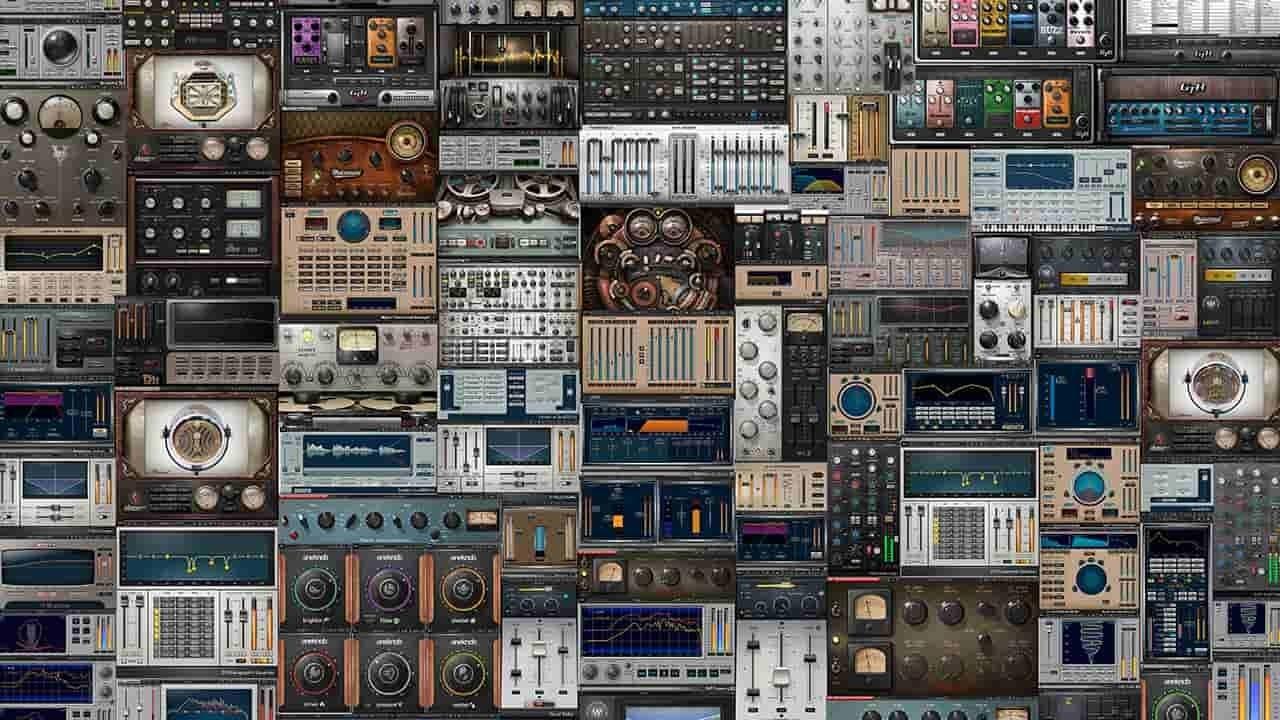The All-Things-Audio Blog
Groove in the Mix

Music is all about emotion and getting people to feel something. Sometimes we as engineers like to make things more complicated and technical and we forget the emotion. A lot of people have asked me, "How do I know when my song is ready for mastering? How do I know when I'm done mixing?" I always say the same thing:
If your song translates the groove and emotion it's supposed to have on multiple devices, you're ready for the mastering stage. There is no need to over-mix your music, it can end up losing its pizzazz and flare. If you put it on a car system, boom box, phone, laptop, computer speakers, and no matter what it's grooving, the kicks are cutting through, the bass is singing, vocals sit right, it's great, you can now move on to mastering. Don't beat a dead horse. There's no use trying to pick apart every nitpicking detail of a mix. When it comes down to it, the only people that will know what those little details in a mix are going to be engineers, and if you are confident in ...
Consider the Reverb in BOTH Ears

I learned this trick from a good friend and relative named Ryan Staples. He worked at Ocean Way Studios alongside Jack Joseph Puig (JJP). He had a lot of useful information and tips and tricks he picked up from various engineers he had run into. This was one that stuck out to me.
I had asked him a few questions about reverb. I was struggling to get my vocal and synths to sound big. He had mentioned a few EQ tricks (which work wonders but didn’t help quite help out here). He talked about distortion. Tried it. Didn't quite work. Then he said something along the lines of, "have you tried different reverbs in the left and the right?"
(insert timandericmindblown.gif)
I'd never heard anything like that. Two different reverbs in each ear?? Wouldn't that send earth spinning out of the solar system? Corrupt patterns established millions of years ago? I was fascinated at the idea. I always thought to have one, two, maybe three different reverbs on my whole mix. I would send different things ...
What is the Best Plug-In?

If you’re like me, you’re always wondering which reverb(s) and delay(s) you should be using on your mix. There are so many options. So many that “look cool.” So many that people have told you “sound the best.” So which one is the best?
Well the good news is, you can’t mess up. By using your ears, you’re going to be able to tell if something is working or not. So rule out the scare/mess up factor, because that’s bogus.
The best way I was able to figure out reverb and delay was to try one at a time. It’s kind of similar to what I say about EQ and compression (which is a huge time saver, just picking one thing), it’s more about learning the gear, which results in a big problem I have with plugins. The reason being, if you buy a $1500 outboard compressor, you’re going to run everything through that. You spent 1500 flipping bucks on that thing, you’re going to learn it. But when you buy 200 plugins for $500, you all of a sudden have a bunch of tools to learn from. And more often than not...
Create Tone through Distortion

I love to mangle my effects to get different character rather than your straight-forward reverb or delay. By adding distortion and messing with the pitch, you are not only creating different tones and textures, but you're expanding the harmonic content.
Remember the lower a note is played, the lower its cycle (hz) becomes. So by modulating pitch on a reverb or delay, you are increasing and decreasing the frequency at which that sound occurs, creating a wider span of audio content. Now you could argue; “But won't this make my thing out of tune??" Probably! But that's what is so awesome about this. Depending on the type of music, it may be a good thing. It may mix things up a bit to make things a little bit abnormal.
For example, look at Boards of Canada. They use modulated pads that make the character of the notes go in and out of tune. It's all done in a matter of cents on the pitch scale, but they do it nonetheless. So let's say you are doing a vocal reverb/delay send, you can cre...
How to get some High Quality "2001" Tom Drum Sounds

Tom drums are one of the hardest things for me to get right in a mix. I feel like if I try and make them “big and epic” they end up sounding cheesy. On the other hand, if I don’t go all in with them, then they’re just lifeless and boring, with no impact in the mix. So how do you get them to sound full and cut without sounding fake?
One way I’ve found that helps is by having a duplicate track running an octave above the source, which gives your ears more to grab onto, and identify them in a mix a lot easier. It also helps bring out the tonal quality of toms. If you’ve ever played drums or heard a tom, you know it has a heavy “DOOOOONNNNG” type sound. This is its resonating frequency, what helps distinguish a high tom from a floor tom. This resonating frequency is also something that is really easy to get buried in a mix.
If you’re like me, it seems like your toms sound like a piece of paper being flicked by a pen, certainly not like a big beefy drum. It’s because your resonance and t...
Getting Natural Sounding Drums from MIDI

A lot of people struggle to get their “MIDI” sounding drums to sound human. I’m a huge advocate on helping people understand ways to make their programmed drums sound more human. So what’s the trick? Well there’s not just one, there’s a lot of subtle moves that you can do to make your drums sound natural.
One way is to create “flams”. Make big hits by “flamming” them, or offsetting them from the grid a little bit. This leads to another trick; do not quantize everything to the grid all the time. Make sure your key hits are lined up (like the 1st) and then let everything else fall in its place. Let your drum beat be loose. You could also change some of the velocities, so no hit has the same impact as the last, creating a more realistic groove and rhythm in your drums.
However, one of the best things you can do to help is while you are triggering drums. For the longest time I struggled to make my triggered drums or programmed drums to sound human because I wanted to isolate each indiv...
Avoid Fake Sounding Audio

Reverb: The Bane of Audio

Reverb is one of those weird effects that screws up a lot of people. I would always get tripped up with it and feel like I was always doing the wrong thing. Over the years, I’ve found that I usually like to shave off highs & lows on reverb & delay sends. However, this can get out of hand quick, and you need to make sure that you DO NOT let that 150hz-5k range get clogged. Be smart and use EQ!
One advantage to cutting highs on a reverb is you are helping make sure it doesn't get in the way of your lead. Whether that be a vocal, synth, or something else, when you have too many "things" competing for attention in the upper region, it can get messy and too many things are competing for your attention.
Cutting lows serves the same purpose. You don't want to get your low end too clogged up with low end information. This is important to watch out for because that low area can easily get out of hand and take up a ton of headroom in your mix. Shaving off some of that unnecessary low end is a...
Triple your Mic Locker without Tripling your Budget

Today I want to help you double or even triple your current mic locker for free. Check this out.
For years I thought that by building my microphone locker I’d be able to achieve dozens of different tones and get different sounds out of my instruments, which is completely true. I found myself on a microphone shopping spree. I just wanted to grow my mic locker as big as possible. As I continued, I noticed that I never had the chance of learning what each mic could do, only what they couldn’t.
There lies the key to doubling or tripling your mic locker: LEARN your microphones. Before you get mad at me and say that’s cheating, think about this.
Different Microphones have different pickup patterns. Understanding your microphones pickup patterns will change the way you record in two ways;
- It will help you understand where it is capturing different frequencies. Simply turning the microphone one inch, you can dramatically change the tone and sound of the source audio. This could end up ...
Ignore Solo

Want to spend less time and shed less tears over mixing? Ignore the solo tracks button!
The listener will never hear your tracks in solo, so they will not care if it sounds good or bad in solo. Before I got into mixing, I was talking to an audio engineer about this. He was telling me about how he would get his drums to sound super good in solo. When he would un-solo them, they would sound terrible in the track. I had no idea what he was talking about. I thought, "if they sound good in solo, how could they not sound good when they're with everything else?"
I soon realized when I started mixing that it was mostly true. I’d get paranoid about making it sound good in solo, but it would end up making my drums, guitar, or whatever sound bad anyways when I turned solo off. Don't think that there is a right or wrong way with mixing, it's all about how it sits with your mix.
So don’t worry if something is good in solo or not. If it works with the rest of the track, GREAT! Your listener will ...
